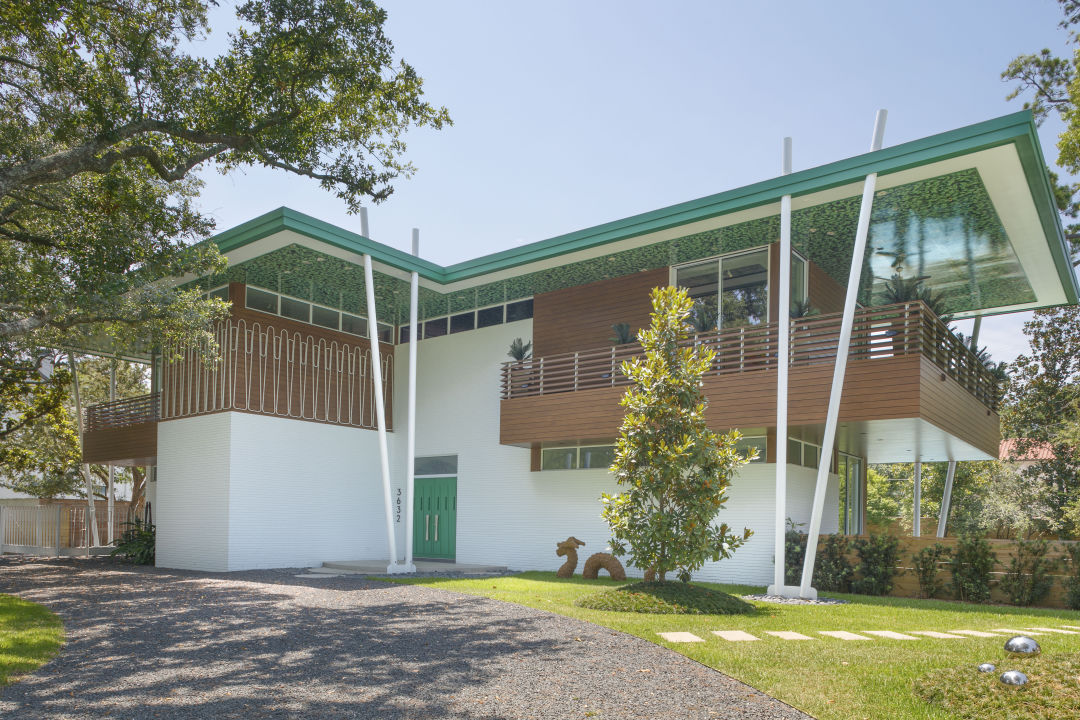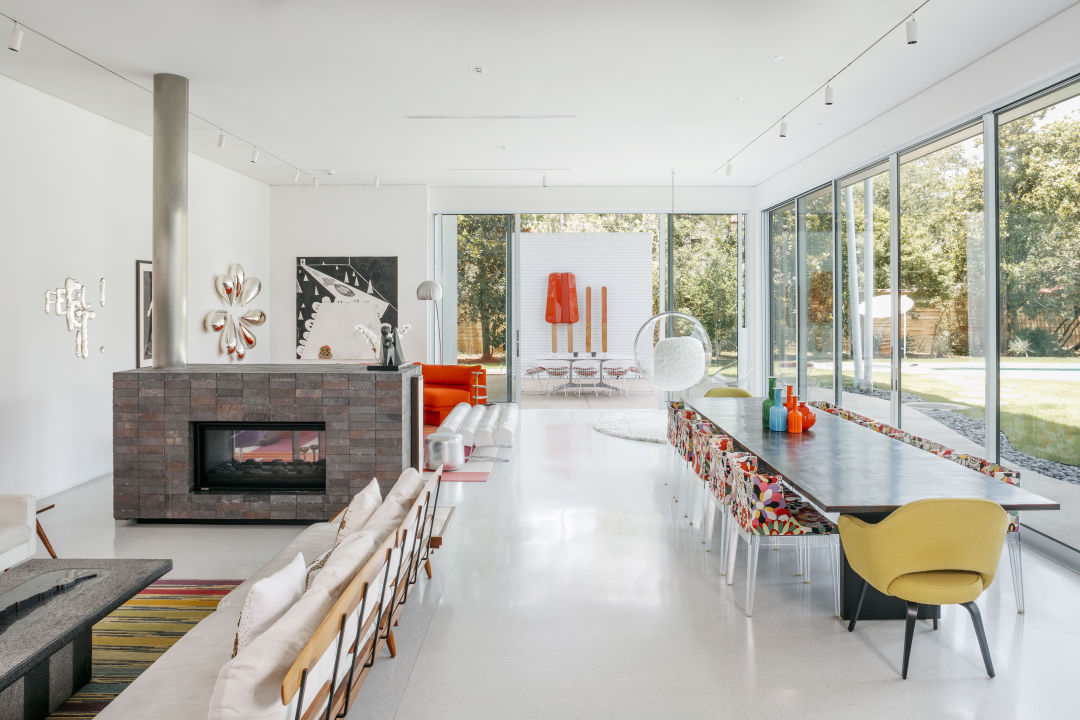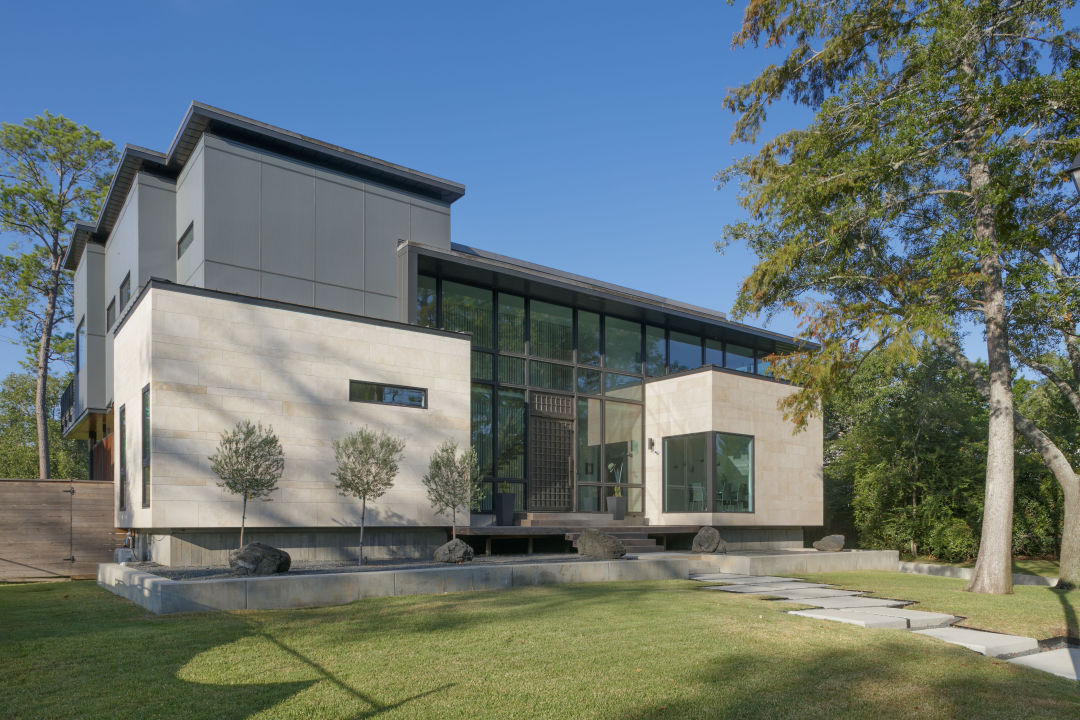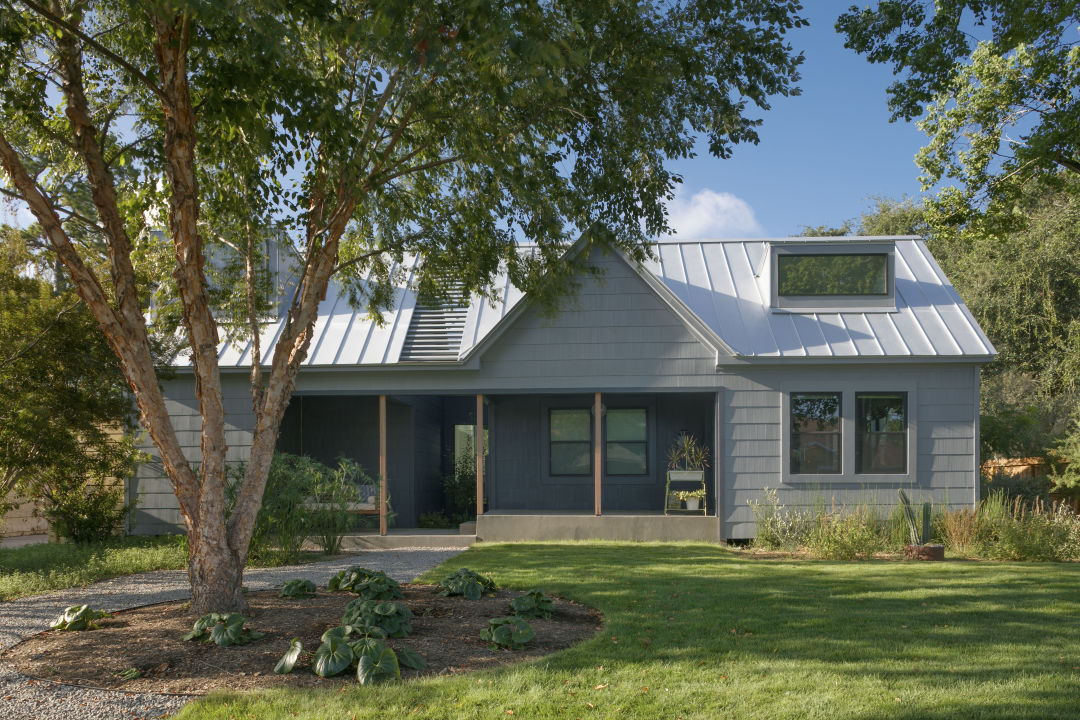Our Favorite Homes in the 2023 AIA Houston Home Tour

The AIA Houston Home Tour includes this colorful midcentury-inspired home in River Oaks.
Image: Benjamin Hill Photography
Houston, it’s time to go home. Well, not your home: it’s time to explore some of the nicest houses in the city by way of the 2023 AIA Houston Home Tour. Presented annually by the Houston chapter of the American Institute of Architects, the event is taking place this year on Saturday, October 21, from noon to 6 p.m.
For the uninitiated, the Houston Home Tour allows the general public to explore some of the city’s most unique private architectural gems (you can purchase tickets here). It’s one of the easiest ways to get a peek inside some stunning local homes that are likely well outside your price range. The eight featured homes this year range from charming bungalows to a Palm Springs–inspired palace with strong Old Hollywood aesthetics. We’ve picked out three of the most unique homes on the tour so you can hit the ground running.

The Inverness Residence in River Oaks is inspired by classic midcentury design.
Image: Benjamin Hill Photography
The Inverness Residence
A joyful, mostly midcentury marvel
This new River Oaks home from Dillon Kyle Architects presents a playful reinterpretation of classic midcentury aesthetics. The 6,279-square-foot property is owned by an avid art collector, who is described by the building’s architect, Dillon Kyle, as a free spirit with a love for design. Despite the residence’s very serious curb appeal, the property doesn’t take itself all too seriously. “It’s not trying to be authentic or pure; it’s just doing its own thing,” Kyle says. “There’s a kind of irreverence for formality or for trying to do things in a restrained or correct way. It’s supposed to be a fun house that makes its owner happy.”
While the house, which is partially inspired by the owner’s childhood trips to Palm Springs, can definitely be described as midcentury, it doesn’t follow all the rules. For example, unlike most designs from that era, the walls of this home are quite tall, and were devised to display the owner’s expansive collection of modern art. Much of the house was designed around this collection, and the architects were aware of where each piece was going to eventually be placed during the process.

Can you tell that the owner of this home has an expansive art collection?
Image: Benjamin Hill Photography
Cool touches include the home’s slightly sloped roof, upheld by structural columns that provide support while also channeling rainwater from the roof. The underside of it, where it hangs over the building, has been covered in a playful printed graphic of lush green leaves and white magnolia flowers. It’s a whimsical design feature that makes the roof feel like a natural extension of the surrounding tree canopy.
Another cool feature is the home’s boomerang-shaped pool. The silhouette was a common motif used in classic midcentury design, and pools of this shape were everywhere in the 1950s, ’60s, and ’70s before more boring rectangular pools took over.
Although the home clocks in at over 6,000 square feet, Kyle says it actually has a small footprint for its lot size and for the neighborhood in which it’s located. And while the L-shaped home has a large primary suite, it only has two secondary bedrooms. According to Kyle, most of the homes in the area clock in at around four or five bedrooms. Although it’s not quite as palatial in scale as its neighbors, the home seems much bigger than it is due to its vertical scale.

The River Point Residence in Hunters Creek Village features a 2,000-square-foot basement that is designed to flood.
Image: Benjamin Hill Photography
The River Point Residence
A flood-proof beauty with bayou views
This thoroughly modern home, which sits just a few hundred feet from Buffalo Bayou in Hunters Creek Village’s Riverbend neighborhood, replaced a classic midcentury home of a much smaller footprint that was flooded during Hurricane Harvey. Although the owners were devoted to their former home, it sat under six feet of water for over a week and was unsalvageable.
Instead of going with a similar design for their new home, the owners decided to do something much grander with the property. “They really wanted to focus on doing something modern that reflects their current lifestyle and aspirations,” says Mark Schatz of M + A Architecture Studio, the firm that designed the home. “The house was designed around integrating the site and the views from the back of the bayou.”

The thoroughly modern home sports unrivaled views of Buffalo Bayou.
Image: Benjamin Hill Photography
One of the coolest features of the new construction is that it’s one of only a handful of homes in the area that features a basement. You might think that a basement is a bad idea for a home that has previously flooded, but Schatz says that it is actually designed to flood. The 2,000-square-foot basement was created from cast-in-place concrete and has all the electrical high up, meaning that when it floods, the owners can simply power-wash everything and call it a day. The basement has space to park vehicles as well as an art studio and a workout room.
Atop the basement, a full six feet over where the waters reached during Harvey, is the main residence, which is connected to the basement by a stunning, three-story staircase that functions as the heart of the building. The guardrail system on the staircase is made up of vertical steel bars that vary in size to create a cool moray effect.
The home’s first-floor living spaces are open and flowing, and all the bedrooms are located on the upper level, including an expansive, resort-style primary suite and rooms for the children. The home boasts some pretty spectacular bayou views and extensive outdoor living spaces.

The Joyce Residence in Lindale Park has undergone a modern update, but it still showcases a hefty dose of historic charm.
Image: Benjamin Hill Photography
The Joyce Residence
A charming, historic bungalow with a modern facelift
This 1938 bungalow, located within Houston’s historic Lindale Park neighborhood, sports the traditional charm you can only get from historic properties—a charm that has been elevated with a new 900-square-foot addition. The home is owned by architect Eric Hughes of HR Design Dept, who lived in the property with his family through the duration of the construction process.
When Hughes and his wife bought the property 10 years ago, they did some light renovations. Their recent major update was kickstarted when they realized that, due to their expanding family, they just couldn’t live in a 1,000-square-foot space anymore.

The home's new 900-square-foot addition includes an expansive primary suite.
Since Hughes and his family decided to remain in the home during the renovation, the expansion was designed to be self-contained, with all the work separated from the main house until the end of the project.
“I think the most challenging thing was figuring out the right way of tying the two structures together, doing it in a way that felt seamless,” Hughes says.
The addition, which houses a primary suite, is connected to the rest of the home through a united color palette of soft neutrals and through the addition of old growth pine shiplap ceilings throughout. Hughes is a fan of sustainable design, and the home also features narrow-plank flooring, a feature in many older homes, that Hughes salvaged from a property in River Oaks.

This attic studio space is quite cozy, but the owner wanted to lean into its features.
Image: Benjamin Hill Photography
His favorite room in the home is the new studio space upstairs. The room was built out underneath the attic, giving it some rather unusual angles and curves. Hughes decided to make them a feature of the space instead of trying to hide them.
“All of these angles start to create this volume that you’re moving inside. But it still has this really intimate scale to it because the ceiling is diving down on both sides. It feels like a space that’s been carved out,” he says. “We tried to be intentional about how everything worked together, and everything feels like it flows together.”




